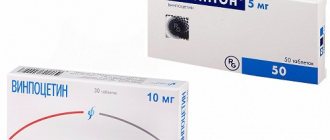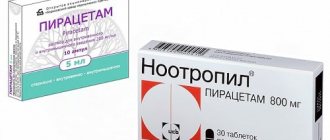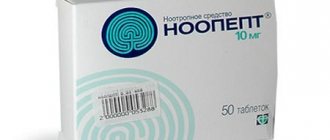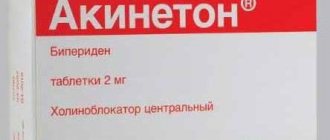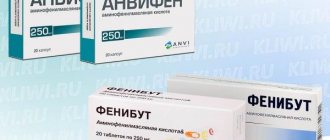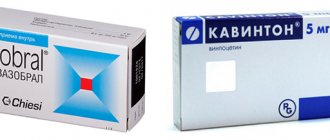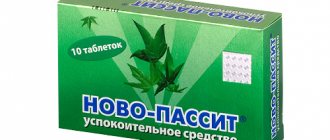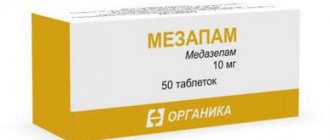In our country, Vinpocetine, a drug for improving cerebral circulation, appeared at the end of the last century and immediately became in demand. This is a fairly effective drug in its field, which can be purchased at a pharmacy without a prescription and at a low price. Over the past 10 years, the medicine has begun to lose ground - numerous analogues of Vinpocetine have appeared with various advantages. Understanding all this diversity on your own, you can make a mistake that will affect the quality of treatment. It is better to entrust the search for a quality substitute to your attending physician.
You can learn more about Vinpocetine here.
Compound
What is the composition of the drug "Vinpocetine"?
The main active ingredient of this medicine is vinpocetine, which is an alkaloid from an extract of the periwinkle plant. In some foreign countries, this medication is registered as a biological supplement, and not a drug. Nevertheless, it is used to treat very serious diseases in which it is necessary to improve the properties of blood flow in the brain, eliminate the symptoms of cerebral hypoxia, improve the functioning of the nervous system and improve cognitive abilities.
Other components of the medicine in tablet form are microcrystalline cellulose, magnesium stearate, lactose monohydrate, and modified starch.
The injection solutions contain benzethonium chloride, propylene glycol, anhydrous sodium sulfite (E 221), glycine, diluted hydrochloric acid, disodium edetate and water for injection as excipients.
Vinpocetine analogues have a similar composition.
Comparison of Vinpocetine and Mexidol
Good blood circulation in the vessels of the brain is the key to excellent health and high performance. To solve problems associated with impaired blood flow and brain activity, Vinpocetine and Mexidol are prescribed.
To solve problems associated with impaired blood flow and brain activity, Vinpocetine and Mexidol are prescribed.
When are Vinpocytin and Mexidol prescribed?
There are many diseases for which these drugs are used. But most often medications are used in the following cases:
- stroke (treatment and prevention);
- ischemic disease;
- vegetative-vascular dystonia;
- asthenic syndrome;
- encephalopathy;
- optic nerve atrophy, vascular pathologies of the retina;
- sleep disorders;
- increased anxiety;
- traumatic brain injuries and their consequences.
What is the difference
The difference between the drugs is as follows:
- Unlike Mexidol, the second medicine does not have a sedative effect.
- Vinpocetine is not prescribed in the acute period of stroke, since this is fraught with increased blood flow in healthy areas of the brain and its decrease in ischemic areas.
- Mexidol can be used in patients with coronary heart disease. The second medication is not prescribed for severe forms of the disease.
- The first remedy is ineffective for senile dementia, and Vinpocetine is ineffective for withdrawal syndrome.
- Mexidol is contraindicated in case of renal and liver failure. Vinpocetine can be used for these conditions, but with caution.
- Mexidol has a wider list of indications for use.
- During production, Mexidol undergoes step-by-step purification. The result is better tolerability, a minimum number of adverse reactions and contraindications.
Mexidol can be used in patients with coronary heart disease.
Which drug is better
Medicines represent different pharmacological groups and have different effects on the body. Mexidol is recommended for use to achieve a sedative effect in case of myocardial damage and coronary heart disease. The drug helps with depression and alcohol withdrawal syndrome.
Vinpocetine is best prescribed for chronic cerebral ischemia, severe hearing and memory impairment caused by a disorder of blood flow in the brain.
When choosing a medicine, you need to take into account the diagnosis, the severity of the disease, and the individual characteristics of the patient. Only a doctor can choose the right drug.
How they affect the body
Mexidol is an antioxidant and nootropic drug.
It makes the body more resistant to damaging factors, reduces platelet aggregation, improves cerebral blood flow, rheological properties of blood and microcirculation.
Vinpocetine has a similar effect on the body. It dilates blood vessels, prevents the development of hypoxia and thrombus formation, and improves cerebral circulation.
Impact of joint therapy
The simultaneous use of drugs helps restore normal blood circulation. This improves cognitive functions, increases mental performance, eliminates unwanted symptoms and normalizes well-being.
Directions for use and dosage
At the beginning of therapy, Mexidol tablets are taken three times a day, 125-250 mg. Then the dose is increased depending on the current state of health and the desired effect, but not more than 800 mg (6 tablets). Treatment continues for 2-6 weeks or 5-7 days (with withdrawal syndrome). Therapy should be discontinued gradually, reducing the dose over 2 or 3 days.
Mexidol solution is administered intravenously or intramuscularly. The amount of the drug used depends on the diagnosis.
Vinpocetine tablets are taken after meals in a daily dose of 15-30 mg.
Vinpocetine tablets are taken after meals in a daily dose of 15-30 mg. After about a week, improvement occurs, but doctors advise continuing therapy for 3 months.
special instructions
When treating with Vinpocetine, an ECG should be done in patients who experience prolongation of the QT interval (including due to drug therapy).
Vinpocetine contains lactose, which should be taken into account by people intolerant to this substance.
Mexidol can cause hypersensitivity reactions in asthmatics and people with sulfite intolerance.
Pregnancy and lactation
Pregnancy is an absolute contraindication to taking Vinpocetine and a relative contraindication to Mexidol.
The use of medications during lactation is prohibited.
Childhood
The drugs are not prescribed to children due to the lack of sufficient information.
Elderly age
Manufacturers have not provided specific guidance regarding the use of medications in older adults.
Side effects of Vinpocetine and Mexidol
Mexidol can cause allergic reactions, drowsiness, nausea, and dry mouth.
The instructions for use of Vinpocetine list more side effects:
- Heart, blood vessels: ECG changes, extrasystole, tachycardia, hot flashes, changes in blood pressure.
- Nervous system: sleep disturbances, headaches, general weakness, dizziness.
- Digestive tract: heartburn, nausea, dry mouth.
- Skin: allergic manifestations, hyperhidrosis.
Contraindications to the use of Vinpocetine and Mexidol
Mexidol is prohibited for use by people with individual intolerance, severe disorders of the renal apparatus and liver.
Vinpocetine is not prescribed for hypersensitivity, severe arrhythmias, the acute phase of hemorrhagic stroke, or severe ischemic heart disease.
Effect on driving
Vinpocetine does not affect concentration or reaction speed, but caution should be exercised when using Mexidol.
Interaction with other drugs
Mexidol weakens the toxic effect of ethanol, increases the effectiveness of anticonvulsants and antiparkinsonian drugs, benzodiazepine anxiolytics.
Vinpocetine in combination with α-methyldopa may enhance the hypotensive effect. The simultaneous use of drugs requires regular monitoring of blood pressure.
Caution should be exercised when taking Vinpocetine together with drugs with central, anticoagulant and antiarrhythmic effects.
Alcohol compatibility
Mexidol is compatible with ethanol, so it is often used for alcohol withdrawal syndrome. However, intentional drinking during treatment is not recommended.
Vinpocetine is incompatible with ethyl alcohol. This combination can increase the side effects of the drug and cause serious complications.
Overdose
Taking large doses of Mexidol may cause drowsiness. Data on overdose of Vinpocetine are limited. The appearance of any side effects requires gastric lavage, sorbent intake and symptomatic treatment.
Conditions for dispensing from pharmacies
To purchase medications, you will need a doctor's prescription.
Storage conditions
The drugs are stored in dry places protected from light. The optimal temperature for Vinpocetine is +15…+30°C, and for Mexidol – no higher than +25°C.
Best before date
Mexidol retains its properties for 3 years, Vinpocetine – 5.
Analogs
Mexidol can be replaced with the drugs Ethoxidol, Cytoflavin, Hypoxen, Combilipen, Emoxibel, Polyneurin, Cerebronorm, Cortexin, Memoria, Vitagamma, Trigamma, etc.
The following drugs are analogues of Vinpocetine: Vicebrol, Piracetam, Cavinton, Oxopotin, Neurovin.
Drug price
The cost of Vinpocetine varies from 20 to 230 rubles. A package of Mexidol in tablets costs 240-450 rubles, ampoules – 440-2050 rubles.
Reviews
Olga, 52 years old, Moscow: “I took Mexidol for pancreatitis along with other medications prescribed by the doctor. My health improved quickly. There were almost no side effects."
Konstantin, 63 years old, Roslavl: “As a former doctor, I can say that Mexidol and Vinpocetine improve cerebral blood flow. I used to prescribe them to my patients, but now I take them myself. I noticed that I feel good now. I’ve become more concentrated and I remember the necessary information faster.”
Irina, 55 years old, St. Petersburg: “I took medication after a traumatic brain injury. The drugs helped, but there were some side effects - nausea, dry mouth. I advise you to use the tablets only with your doctor’s permission.”
Source: https://l-obuv.ru/pankreatit/vinpocetin-i-meksidol
Mechanism of action
The drug has an antihypoxic and vasodilator effect, which occurs due to increased transport of glucose and oxygen through the blood-brain barriers, as well as an increase in the proportion of glucose metabolism. The medication also helps to normalize cerebral circulation, dilates some blood vessels in ischemic areas of the brain, without having a significant effect on the functional qualities of the heart and peripheral blood circulation.
The active ingredients of the drug lead to increased blood flow to ischemic areas where low perfusion is observed. At the same time, Vinpocetine activates metabolism in the brain, which results from increased utilization of glucose and oxygen, as well as increased levels of serotonin in the brain.
In the body, the active substance binds 68% to blood proteins. The therapeutic effect, as a rule, is achieved at a concentration in the blood of 10-25 mg/ml. The drug is transformed in the liver, forming inactive metabolites: apovincamine and hydroxyapovincamic acids, vinpocetine hydroxide, dihydrovinpocetine glycinate. The metabolism of the active substance of this drug is not affected by liver and kidney diseases.
The period of elimination of the drug from the body is approximately 5-6 hours, and this occurs in the form of metabolites contained in urine. A certain amount of the active substance leaves the body unchanged.
Let's consider the indications of Vinpocetine. Reviews about it are mostly positive.
Beneficial features
In a study on patients with chronic cerebral ischemia, the drug was found to increase attention and concentration. Increasing blood flow to the brain is thought to help people with ADHD
Increased cerebral blood flow combined with antioxidant and anti-inflammatory properties may explain the beneficial effects for people suffering from anxiety and depression.
Many suffer from a feeling of brain fog, characterized by a lack of energy and unclear thoughts. Cavinton improves cellular metabolism and the ability of cells to produce more ATP. This increase in brain fuel improves mental clarity.
Cavinton increases cerebral blood flow without systematically changing blood pressure. This effect is thought to reduce the frequency of headaches.
Decline in cognitive function is a natural process of aging of the body and brain. This is caused by both wear and tear on the body and the accumulation of free radicals. If we are unable to control the first process, then we can ensure the second process, namely the removal of toxins from the body. It is thanks to its antioxidant and anti-inflammatory effects that vinpocetine combats age-related mental decline.
During the process of excitotoxicity (when neurons are damaged and killed by excessive activation of excitatory neurotransmitter receptors), loss of mitochondrial membrane potential occurs. Vinpocetine reduces this loss and allows you to create more ATP.
Indications for use
The main indications for prescribing the drug are:
- Conditions after strokes.
- Circulatory disorders in the brain in chronic forms.
- Dementia, which can be caused by circulatory problems in the brain.
- Transient ischemic attacks.
- Post-traumatic and hypertensive encephalopathy.
- Atherosclerosis.
- Vertebrobasilar and cerebrovascular insufficiency.
Ophthalmologists, as a rule, prescribe this drug for various chronic vascular diseases, which include vasospasms and thrombosis of the vein or central arteries of the retina, as well as retinopathy of diabetic etiology.
In otology, this pharmacological drug is used for Meniere's disease, idiopathic tinnitus, and decreased hearing acuity.
"Vinpocetine" (instructions for use): at what pressure and for what diseases is it used?
The use of this drug is practiced for various cerebrovascular pathologies.
- The basis for prescribing Vinpocetine may be a stroke. It occurs when the blood supply to certain parts of the brain is disrupted as a result of blockage of blood vessels (ischemic type of stroke) or their rupture (hemorrhagic type).
- The next indication is vertebrobasilar insufficiency. It is diagnosed when there is a weakening of blood flow in the vertebral or basilar arteries.
Causes of dementia
- It is recommended to use the medication for vascular dementia. It is an acquired dementia resulting from damage to the cerebral vasculature.
- The drug is also used for cerebral atherosclerosis. It is diagnosed when atherosclerotic deposits form in the vessels of the brain.
- The list of indications includes hypertensive and post-traumatic encephalopathy. The first occurs due to high blood pressure, the second - as a result of injuries with subsequent degenerative changes in the brain.
Vinpocetine is also used in the treatment of vascular pathologies of the eye, senile hearing loss, Meniere's disease (a disease of the inner ear with an increase in the level of labyrinthine fluid and an increase in intralabyrinthine pressure), and tinnitus.
Many patients are interested in whether Vinpocetine lowers blood pressure or not? Putting the question in the context of “does the drug increase or decrease blood pressure” is not entirely correct. The medicine is not intended to directly affect blood pressure. However, Vinpocetine can reduce blood pressure. The hypotensive result of treatment is considered one of the possible side effects. But pressure increases and fluctuations cannot be ruled out.
Methods of administration and dosage of the drug
In the form of injections, the drug "Vinpocetine" is administered intravenously using a dropper. The speed of this process should not exceed 90 drops per minute. The concentrated drug is prohibited for injection, subcutaneously and intramuscularly.
The initial dosage is 20 mg of the active substance per day, that is, two ampoules, which are diluted in half or one liter of solution, which is intended for intravenous infusion. Subsequently, the average dosage is 50 mg per day. The duration of treatment with Vinpocetine in the form of injections is no more than 14 days.
After completion of therapy, the use of this drug in tablet form may be prescribed. Initially, 5 or 10 mg of the active substance is prescribed, that is, one or two tablets, three times a day. This medicine is used during or immediately after meals. Maintenance treatment consists of taking one tablet of the medication three times a day for about two months.
Reviews
You can find many patient reviews about the drug. Mostly people respond positively to the medicine. Let's read the reviews of specialists and people taking this medicine.
Doctors
- Marina Nikolaevna, therapist. In order to prevent the development of problems with cerebral circulation, I advise patients to take Vinpocetine forte. With the help of this inexpensive drug, cerebral circulation is improved and the formation of disturbances in the functioning of blood vessels is prevented. At first I prescribe the minimum therapeutic active dosage. If necessary, being careful, I increase it. If the patient adheres to all treatment recommendations, the medicine is well tolerated, and there are almost no negative reactions.
- Tatyana Sergeevna, psychotherapist. Great medicine. It helps to cope well with vascular crises and disorders of cerebral circulation. Treatment with the drug involves taking pills for a long time. Excellent relief from dizziness, lowers blood pressure. Patients tolerate it well.
Contraindications to the use of the drug
The main contraindications to taking Vinpocetine are:
- hypersensitivity to the active substance;
- coronary heart disease and thrombophlebitis in severe forms;
- cardiac arrhythmia;
- increased intraocular or intracranial pressure;
- the first period after hemorrhagic cerebral stroke;
- period of lactation and pregnancy;
- childhood.
Side effects
Undesirable side effects when using this medication are rare, but the following body reactions are possible:
- Central nervous system: cephalalgia, dizziness, lethargy, insomnia, weakness;
- Gastrointestinal tract: dyspepsia, heartburn, dry mouth;
- Cardiovascular system: increased heart rate; decreased intraventricular conduction, hypotension, extrasystole;
- Skin: sweating, redness of the skin on the neck and face.
Some patients may experience allergic skin reactions, as well as a feeling of heat in the body.
Interaction with other pharmacological agents and alcohol
During therapy with the pharmacological drug Vinpocetine, it is not recommended to drink alcohol-containing drinks, since such a combination can cause severe dizziness and increased drowsiness.
Concomitant use of heparin increases the likelihood of bleeding.
Use of the drug simultaneously with antihypertensive medications may enhance the hypotensive effect. Synonyms and analogues of Vinpocetine should be selected by a doctor.
special instructions
You should not breastfeed while taking the drug.
During treatment with this drug, you need to consider some points:
use is prohibited for pregnant women, since there is no reliable information regarding the use of tablets for this condition, and the level of safety for the unborn baby has not been identified; if the drug is prescribed during breastfeeding, you will have to stop breastfeeding for the period of use; not prescribed to patients under 18 years of age; if anticoagulant therapy with heparin is carried out in parallel, there is a risk of bleeding; if you take antihypertensive drugs simultaneously with Vinpocetine forte, blood pressure is greatly reduced; Treatment with this medication is not recommended against the background of unstable blood pressure and decreased vascular tone; You should use the medication very carefully if the patient is intolerant to the alkaloid substances of Vinca minor; People with impaired liver function should take the pills with caution; Since the tablets can affect the speed of the psychomotor reaction, it is not recommended for people who drive vehicles or if increased alertness is required during work.
Features of application
This drug is prescribed with caution to people with cardiac decompensation, due to the risk of bradycardia. After a hemorrhagic stroke, Vinpocetine is prescribed no earlier than after two weeks of the acute period of the disease. The use of the medication is not recommended for patients with changes in blood pressure.
When prescribing this medicine to elderly patients, it should be borne in mind that in most cases it causes side effects in this category of people.
Drug interactions
Interactions are not observed when used simultaneously with β-blockers (chloranolol, pindolol), clopamide, glibenclamide, digoxin, acenocoumarol and hydrochlorothiazide, imipramine.
The simultaneous use of Vinpocetine and α-methyldopa sometimes caused a slight increase in the hypotensive effect, so this treatment requires regular monitoring of blood pressure.
Despite the lack of data confirming the possibility of interaction, caution is recommended when co-administering drugs with central, antiarrhythmic and anticoagulant action.
What is better, Vinpocetine or Cavinton?
These drugs are medications that improve blood flow in the brain. They are based on the same active ingredient - vinpocetine, which has a complex effect and can improve the activity of the circulatory system of the brain. This element has a positive effect on the metabolism in it and affects the rheological qualities of the blood (reduces the level of coagulation).
It follows that Vinpocetine and its analogue have the following qualities:
- vasodilator;
- neuroprotective;
- antiaggregation;
- antihypoxic;
- improving cerebral circulation.
Such pharmacological agents have the same list of indications, side effects and contraindications. The main difference between these products is that they are produced by different manufacturers and have different prices. So what to choose - Cavinton or Vinpocetine?
Which medicine to choose in each specific case can only be decided by a specialist and the consumer, since both of these medicines have the same effect on the body.
The drug we are describing is produced in Russia, as a result of which it is somewhat cheaper than the imported analogue of Vinpocetine, Cavinton.
In medical practice, the drug Cavinton is most often used, since it is a more modern pharmacological drug that causes fewer adverse reactions and is more well tolerated.
Let's consider other analogues.
pharmachologic effect
A drug that improves cerebral circulation and cerebral metabolism. Vinpocetine has a vasodilator, antihypoxic and antiplatelet effect. Inhibits phosphodiesterase activity, which promotes the accumulation of cAMP in tissues. It has a vasodilating effect mainly on the vessels of the brain, which is due to a direct myotropic antispasmodic effect. Systemic blood pressure decreases slightly. Vinpocetine improves blood supply and microcirculation in brain tissue, reduces platelet aggregation, and helps normalize the rheological properties of blood. Improves the tolerance of hypoxia by brain cells, promoting the transport of oxygen to tissues due to a decrease in the affinity of red blood cells for it, increasing the absorption and metabolism of glucose. Increases the content of catecholamines in brain tissue.
Vinpocetine is effective in the acute period of stroke: it accelerates the regression of general cerebral and focal neurological symptoms, improves memory, attention, and intellectual productivity. In old age and senility, the sensitivity of cerebral vessels to the relaxing effect of vinpocetine increases, which is due to sensitization of the adenylate cyclase-cAMP system during aging.
Pharmacokinetics
When taken orally, vinpocetine is rapidly absorbed from the gastrointestinal tract. Cmax in blood plasma is reached after approximately 1 hour. With parenteral administration, Vd is 5.3 l/kg. T1/2 is about 5 hours.
Analogs of Vinpocetine
Analogues are drugs with the same active ingredient or similar therapeutic effect, which are produced by different pharmaceutical companies. Each manufacturer gives the drug its own name. Analogues of the drug "Vinpocetine" in terms of the substance included in the composition are the drugs that will be given below.
The most popular:
- Vinpocetine Forte.
- "Vinpocetine Acree"
- "Vinpocetine-Darnitsa".
- "Cavinton".
- "Bravinton".
What to prefer - Vinpocetine or Vinpocetine Forte?
The main difference between Vinpocetine Forte tablets lies mainly in the fact that one pill contains double the amount of the main substance - 10 mg.
Medicines similar to Vinpocentin in their effects on the body are the following medicines:
- "Korsavin";
- "Cavinton";
- "Winpoton."
- "Bravinton".
- "Piracetam";
- "Neurovin";
- "Oxopotin";
- "Vicebrol";
- "Actovegin".
"Carnicetine" is an analogue of "Vinpocetine" in tablets. These gelatin hard capsules are available in different packaging. In cardboard packaging and in a polymer jar. The product acts as an antioxidant and has metabolic effects.
A cheap analogue of Vinpocetine is Cerebrolysate, costs 200-220 rubles. Solution in ampoules for injection. Contains amino acids that penetrate directly to nerve tissues. The use of this analogue of Vinpocetine in ampoules is advisable for brain injuries, strokes, cerebral palsy and neuropathies.
How long can I take this drug?
In your case, I would spend money on research into the causes of headaches, rather than spending money on treatment straight away. The neurologist prescribed Cavinton, took the course and saw improvement, took a break, but then the headaches started again, the doctor was on vacation, I decided to take this medicine again, but my blood pressure began to rise.
This treatment can be repeated 2-3 times a year. There is no dependence or addiction to this drug, since it is a vascular drug and does not contain anything bad. I felt really bad after taking the medicine. My mother is 90, hypertensive, and has been drinking Cavinton for a long time.
Is it possible to simply change the medication? The doctor does not delve into the grandmother’s condition. I can’t say that it will definitely help your grandmother. I myself prefer to prescribe imported drugs, but domestic ones are also great for many patients. After 2 weeks of taking vinpocetine, the picture of the heart’s functioning changed, and muscle weakness arose and a noise appeared in the left ear, as if I was traveling on a train... Lera, As far as I know, no adequate medications have been found for the treatment of autism.
In accordance with the instructions, Vinpocetine should not be taken with labile blood pressure and low vascular tone. Unfortunately, there is no release form for Vinpocetine in syrup for children. Hello, I was prescribed the following drugs: Vinpocetine, Piracetam, Neuromultivit and Omeprazole. The information about Vinpocetine given in this section is intended for medical and pharmaceutical professionals and should not be used for self-medication.

